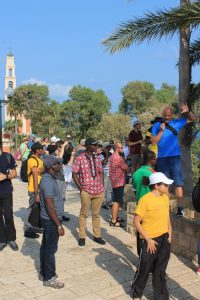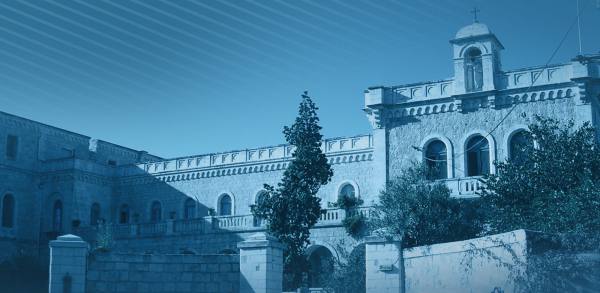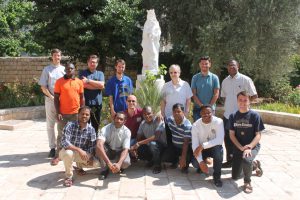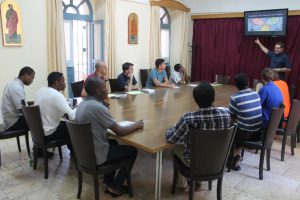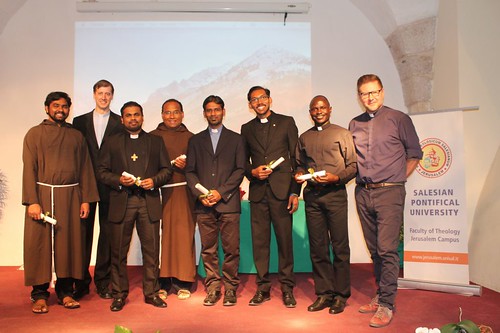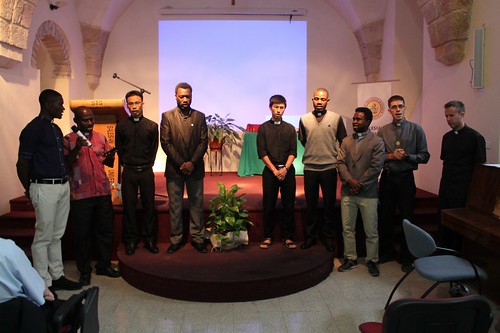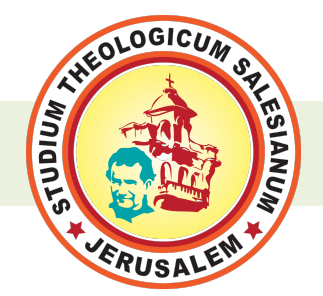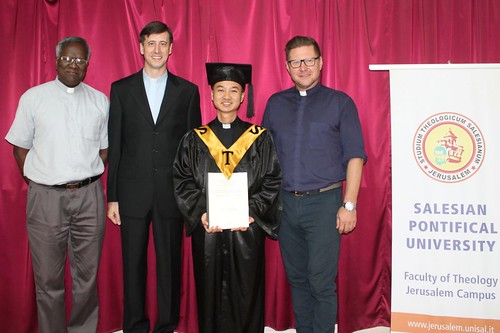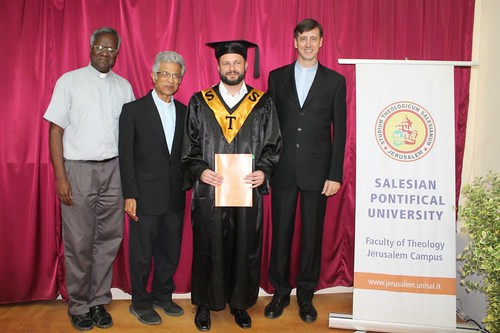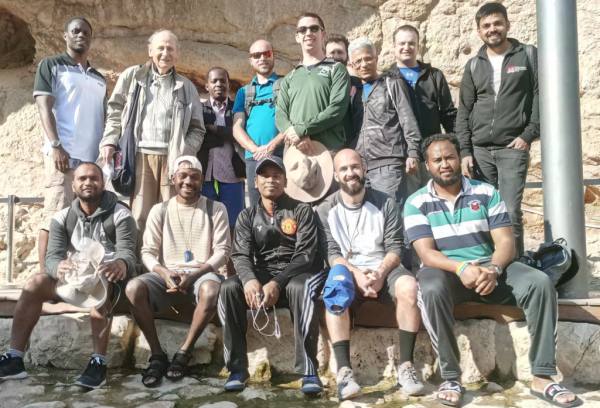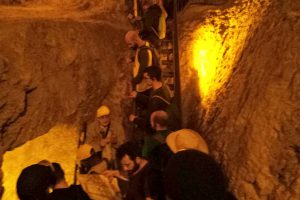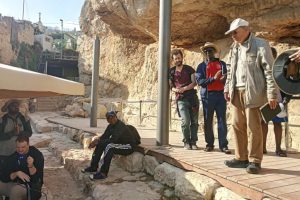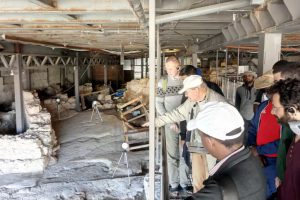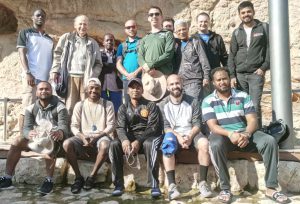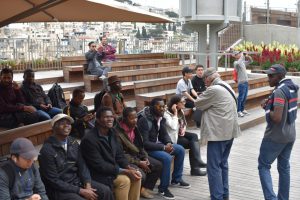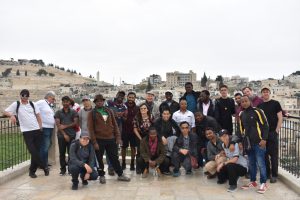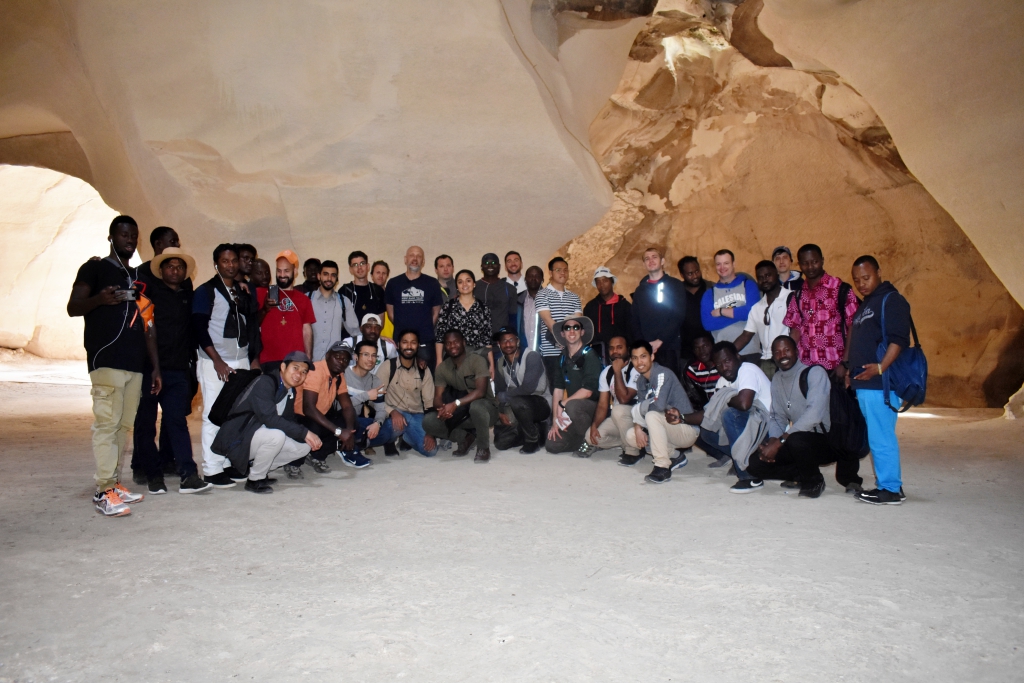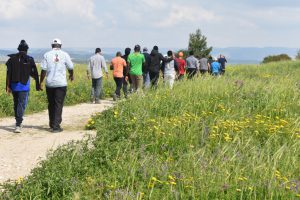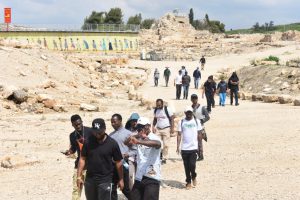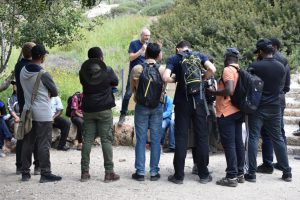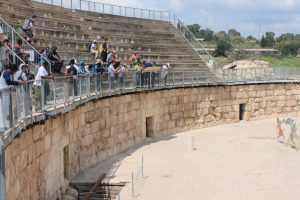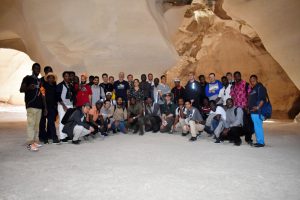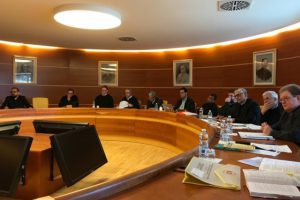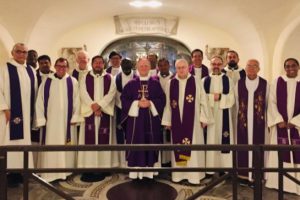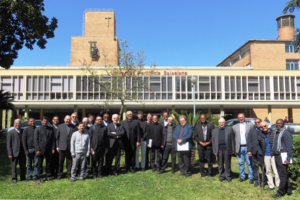Francesco Avesio SDB and Diego Borbolla SDB
September 20 2019 - STS - Jerusalem On September 20, 2019, the yearly series of the archaeological excursions began with a study trip to Jaffa, Caesarea Maritima and the Mount Carmel. The guide of our visit was the STS Professor of Christian Archaeology, Geography and History, Fr. Piotr Zelazko.
The student body departed from Ratisbonne Monastery to the beautiful sight of Jaffa. Here we could visit the area of the Old City. Coming down from the Abrasha Park, the highest point of the place, we visited the Ramses II’s Gate and the excavated ruins of a brick wall of an Egyptian fortress, and walking up again to Kedumim Square, we reached St. Peter’s church and monastery, built in honour of the Apostle who, according to Acts 9, here performed the miracle of the resurrection of Tabitha.
After that, we went towards the archaeological site of Caesarea Maritima, also known as Caesarea Palestinae, the Roman capital of the Province of Judea at the time of Jesus and a Crusader fortress along the road from Acre to Jerusalem. The place, containing ancient ruins dating back to Romans, Byzantines, Crusaders and Ottomans, is noted by the “place of hearing,” located near Herod’s palace and where the Pauline episode narrated in Acts 25 happened.
After lunch in the Caesarea National Park, the group moved lastly to Mount Carmel, visiting el-Muhraqa, the Holy Place associated with 1 Kgs. 18, and enjoyed the panoramic view of the plain of Jezreel from the Discalced Carmelite Monastery roof.
The visit, finishing in the late afternoon, was an appropriate moment to introduce the students to another new academic year.
